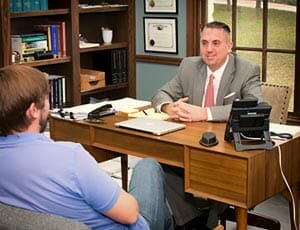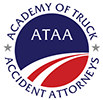Distracted Driving Accidents
Most people are aware that texting while driving is unsafe. But there are many other forms of distracted driving that people engage in every day, probably without even realizing the degree to which they’re endangering themselves and others.
Distraction and driver inattention were factors in more than 100,000 traffic crashes in Texas in 2014, 423 of which were fatal, and nearly 2,600 of which were incapacitating, according to the Texas Department of Transportation. What the data doesn’t show is how those crashes affected the lives of victims, their families, and their communities.
If a distracted driver caused a car crash that injured you or a family member, you may be entitled to compensation. The EVANS / DESHAZO / REILLEY Law Firm, a trusted Austin car accident attorney, has helped people in Austin and throughout the Lone Star State hold negligent drivers accountable for their actions.
Types of Distraction
The National Safety Council recognizes three types of distraction while driving:
- Cognitive Distraction: Thinking about something other than driving, listening to other people talk, or performing a mental task
- Manual Distraction: Taking one or both hands off the steering wheel to perform a task, such as adjusting a stereo, eating, or making a phone call
- Visual Distraction: Looking away from the road for any reason.
Any one of these types of distraction could increase the risk of a crash. And when people try to multitask while driving, they’re often combining types of distraction. For example, talking on a handheld phone involves cognitive and manual distraction. And according to the AAA Foundation for Traffic Safety, cognitive distraction interferes with drivers’ ability to see important visual cues, as the brain isn’t fully focused on driving. If you have been involved in an accident and are seeking legal assistance, consider contacting an Austin brain injury lawyer to help you navigate the legal process.
Technology and Perception
Many new vehicles are equipped with “infotainment” systems that drivers can use to access music, control internal air temperature, get directions, make phone calls, and more. These systems feature large dashboard displays, some of which are complex and require users to locate and tap several icons to take a single action. Even when they can be operated by voice commands, these in-car computers still interfere with cognitive function.
The foundation and the University of Utah conducted a study of how these systems affect driving and found that after using voice commands to execute a task, it takes drivers 27 seconds to return their full attention to driving – traveling at 25 mph, that’s enough time to cover three football fields.
Drivers often don’t recognize how the use of technology impedes their ability to observe and react to stimuli. They may think that because they’re good drivers, they’re not as prone to distraction as other people on the road. A Texas A&M Transportation Institute survey revealed that even though 90 percent of Texas drivers said talking on a cellphone while driving posed a threat to their safety, 76 percent of them admitted they had talked on a cellphone while driving in the previous month.
Attitudes and Legal Concerns
The Texas A&M survey is a strong indicator that in order to end the problem of distracted driving, attitudes must change. Drivers need to understand how distraction creates risk for themselves, their passengers, and other drivers.
Because distraction can arise from a number of causes, lawmakers would be challenged to make distracted driving illegal. However, many states have enacted laws that either ban or restrict the use of cellphones while driving. Texas state law restricts the use of cellphones in limited situations, but approximately 40 cities have ordinances that limit or ban the use of cellphones while driving.
In fact, according to the National Safety Council’s Texas Employer Traffic Safety Program, employers have been held liable for up to $25 million, if an employee who’s communicating with a handheld or hands-free device causes a crash. In one case, an employer was found liable because it encouraged employees to make sales calls while driving; a fatal crash occurred when an employee was making business calls, but driving his own car on the weekend.
Knowing their potential liability, employers may be able to prevent distracted driving crashes by enacting rules that prohibit the use of mobile devices while driving.
Setting an Example
The EVANS / DESHAZO / REILLEY Law Firm believes that as more distracted drivers are found liable for crashes, public opinion may begin to change about what is and is not acceptable behavior. And eventually, Texas may enact tougher laws about the use of distracting technology while driving.
If you’ve been injured in a crash due to another driver’s carelessness, we can help you understand what options you may have. For a free consultation, call us today at 1-855-414-1012, or fill out our online contact form.

 Serving Clients Throughout Texas
Serving Clients Throughout Texas


 Chip Evans is a partner at Evans & Herlihy. Chip brings to the firm more than 20 years of experience as a trial lawyer representing Plaintiffs. It is the desire to help individuals, not corporations, that attracts Chip to this side of the docket. [
Chip Evans is a partner at Evans & Herlihy. Chip brings to the firm more than 20 years of experience as a trial lawyer representing Plaintiffs. It is the desire to help individuals, not corporations, that attracts Chip to this side of the docket. [ 







